Understanding Slope and How it is Measured

Maybe you're wanting to figure the slope of a drive way, a sanitary sewer pipe, a parking lot, a handicap accessible ramp, or maybe even the slope of a ditch. Also from time to time, you may hear people mention that something is at a percent slope and you wonder exactly what that means. If you take something like a ruler, pencil or stick and lay it on your desk, that's zero percent slope. Now, hold the object straight up. Straight up is 100 percent slope. Now you're getting the idea right? A 45-degree angle of the pencil results in a 50 percent slope. Lower it some more and you can easily get the idea of what 10% slope looks like, then 5 and even 2% slope.

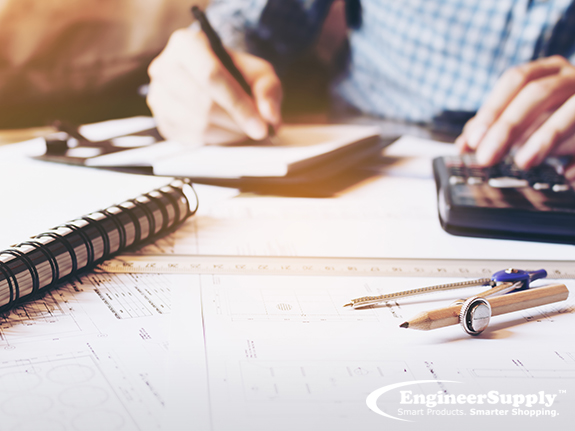
Many times slope plays a much more important role in design and in our lives in general than most people ever realize. The Americans with Disabilities Act (ADA) sets and enforces regulations with design criteria such as the slope of parking lots, sidewalks, and ramps. Sanitary sewer lines are usually installed at a 2% slope so that the water doesn't outrun the solids resulting in a clogged sewer line. Roads and highways are designed such that rainwater runs off yet is not sloped too steep making driving dangerous. There's literally thousands of examples where slope plays into our daily lives.
Slope is found often in the world of Civil Engineering, Design, Landscaping, and Construction. One must be able to fully understand what slope means and how it works. While we can talk and think about slope, we also need to know how to calculate and work with it.
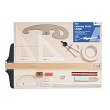
Professional Grade Drafting Supplies
Need drafting supplies and drafting tools for your project? Find portable drafting tables, drawing tools and all you need to get to work.
SHOP DRAFTING SUPPLIES
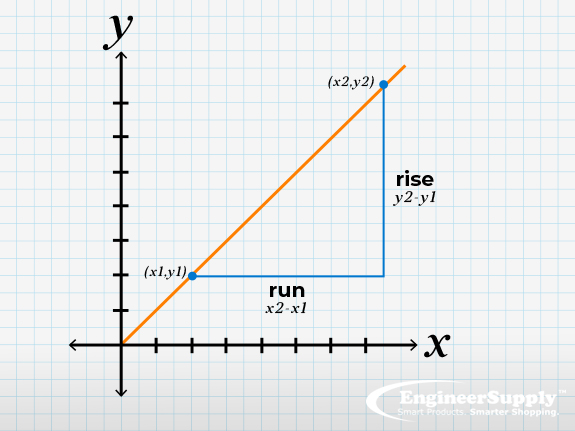
Slope as a Percentage
How do you calculate the percentage grade of a slope? Slope can be calculated as a percentage which is calculated in much the same way as the gradient. Convert the rise and run to the same units and then divide the rise by the run. Multiply this number by 100 and you have the percentage slope. For instance, 3" rise divided by 36" run = .083 x 100 = an 8.3% slope.
Gaining a basic understanding of how to measure slope is important since you can then apply that knowledge to many other situations. Let's start by thinking about using wooden stakes, a good strong string, a string level, and a pocket tape measure to discover slope of the ground. The string level can be used to tie a string off in a level manner from stake to stake. Then using the tape measure to measure down from level the distance to a point on each end of the string. Then you take the distance from point to point along the string. Taking the difference in the two elevations you measured earlier, divide that figure by the length of the string you measured. From here you do the math to calculate slope as a percentage.
Now that you have this basic understanding of how to measure slope, you can then see how a transit or builders level could be used to measure down from level. The transit level sights a level line (invisible since its a sightline) to the grade rod (also known as a level rod) at one point along the distance you are measuring slope from. Then a reading is taken from level to the second spot. Once you know the distance from the two measured spots, and the distance from level on both spots, you can then do the math to calculate slope.
Other tools used for measuring slope would be laser levels, inclinometers, and slope meters.


Great field books to take with you on the job site.
Shop for quality field books that will allow you to make accurate records and store them for long-term use.
SHOP FIELD BOOKS
The field of construction can often be a demanding one. When you spend long hours at a site taking on an array of varied and difficult tasks, it is important to give yourself ample time to ensure you are utilizing the right tools for the job.
Laser measuring tools are a cutting-edge development in the world of construction equipment that have made a serious impact on how easy it is to tackle tasks like
measuring slope, determining elevation, and figuring out the grade of a particular piece of land you’re working on for a job.
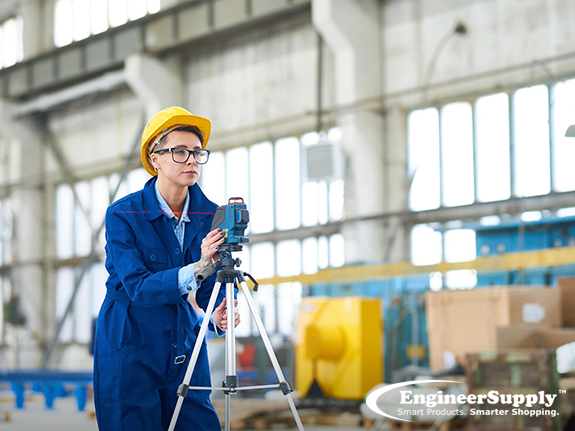
Laser Measuring Tools Are Transforming Construction
In the past, the most effective way of measuring while working in the field of construction was by using a traditional measuring tape. While this is still an effective way of figuring out some measurements, the physical constraints of a tape measure can make it difficult to determine certain angles on terrain with unstable or uneven ground. A
laser measurement device makes the process a lot easier by digitizing the process. All you need to do is point the device the direction you need to measure and look at the readout provided on the screen of the tool.
The Advantages of Laser Measurement Devices
Perhaps the biggest advantage that comes with using
laser measuring tools is the accuracy you can expect on the job. While conventional tape measures are useful, the overall precision of the device is limited by factors like human error and weather conditions. Measuring tools that use lasers are able to deliver accurate readings regardless of external factors that might otherwise result in incorrect data with traditional tools. Whether you predominantly work indoors or outside, taking advantage of this tech can completely transform the way you get through an average workday.
When you're working on a construction project that requires you to figure out an area's slope, you bring your laser measurement devices, which quickly and precisely determine the slope. You should consider brining a few other
measuring tools to make your job easier. Here's your guide to the different measures you should bring to every slope-checking appointment.
Tape Measures
Tape measures are some of the simplest
measuring devices, but they should be in your toolbelt every time you go into the field. They're invaluable if you drop one of your laser measuring tools and need to calibrate it or if you need to measure two distances at the same time. You can also use them to estimate a grade's slope while someone else sets up your precision laser tools.
Angle Measures
An
angle measuring tool helps you determine if a ramp is compliant with the Americans with Disabilities Act. It also allows you to assess if a support is truly straight or if it's starting to sag from rot or corrosion. Finally, if you measure the angle formed by the beginning of a straight grade, this tool can verify your slope readings.
Measuring Rod Rulers
Measuring rod rulers are less portable than tape measures, but they're easier to use if you're by yourself. These
measuring tools are useful for both vertical and horizantal measurements when you're calculating slope manually, and most of them are compatible with laser attachments for automatic readings.
Plan Measures
It's hard to measure distance on paper with your tape measure or rod ruler, but sometimes you need to verify whether your map's or building plan's scale is accurate. Use a plan measure to trace the area you want to measure and receive a precise reading of the perimeter or distance.
To supplement your slope-checking equipment, check out the selection of
measuring tools available from
Engineer Supply before your next contracting appointment.
Frequently Asked Questions About Measuring Slope
What Do I Use To Measure a Hill’s Grade?
Measuring the grade of a hill is no small task. In order for you to get accurate measurements when figuring out the specific grade of a hill, you need to be able to rely on your tools. A laser measurement device can make all the difference in the accuracy of your readings.
Can Laser Tools Measure Drainage Slopes?
Yes, you can easily use your tools to measure inclines for drainage. The most important part of this task is ensuring you have a secured tripod for your tool. Since drainage slopes are wet and slippery, you need a tripod base firmly planted in the ground to deliver accurate readings and limit the odds of a fall.
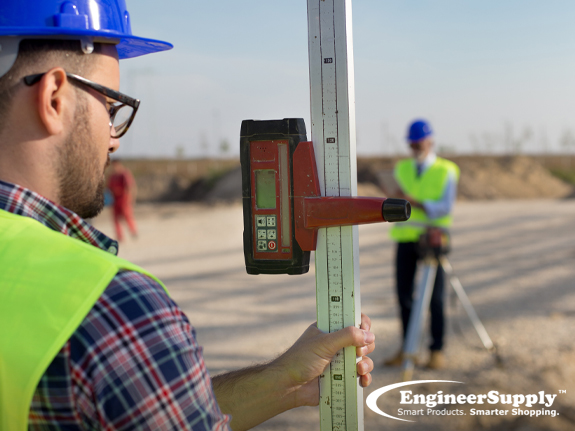
Can a Slope Be Found Easily on a Graph?
Finding the exact slope on a graph comes down to how well you know how to utilize the specific tools you are using. Before you take any laser tools out on the job, be sure to thoroughly read the manuals and play around with the features in order to feel confident in your ability to read the graph and execute commands.
Is It Easy to Measure Elevation With Laser Tools?
As with slopes, it is entirely possible for you to use your laser measuring tools to figure out the elevation of a specific piece of land. As long as you lace the bottom of the leveling rod at the desired height, you should have no trouble getting a reading.
Will My Tools Show Me Slope and Y Intercept?
Since understanding the exact numbers of a slope and Y-intercept can be crucial to the process, your laser tools will be able to provide you with this information. All you need to do is invest in the right tools, learn how to use them, and extract the most helpful data.
In order for you to deliver the best possible results during your next construction job, it can help to invest in the latest tools of the trade. Get a better feel for how these devices work by exploring the available selection at Engineer Supply and finding the right fit for your needs.
How do I measure inclines?
You can determine how much the terrain rises between two points by subtracting the initial elevation point from the final elevation. If the elevation at the bottom of a hill is 200 feet and the elevation at the top of it is 1,000 feet, you would subtract 200 from 1,000 (which would give you 800). So in this situation, the incline between these two points is 800 feet.
What is a 6% grade?
A 6% grade refers to the slope of a road, and the percent value means “per one hundred.” At a 6% grade, you increase your elevation by six units for every 100 units. So no matter which unit of measure is used, it’s important to keep them consistent at each point.A 6% grade refers to the slope of a road, and the percent value means “per one hundred.” At a 6% grade, you increase your elevation by six units for every 100 units. So no matter which unit of measure is used, it’s important to keep them consistent at each point.
Is slope the same as gradient?
The two terms are similar to each other, but slope refers to a connection between two coordinate values. Gradient is like slope, except it refers to a single vector. This difference is important, because each part of the slope gradient indicates the rate of change with regard to that particular dimension.
Why is it called "rise over run?"
If you want to know how to calculate slope, you find the ratio of the “vertical change” to the “horizontal change” between two points on a line. And sometimes it’s expressed as a quotient (called “rise over run”). The slope value will be the same number at every point on a straight line, which will depend on whether it’s moving upwards or downwards. This is the basic way on how to calculate slope.
How do I find rise over run from two points?
Knowing how to calculate the slope of a line is an important skill for coordinate geometry, and it’s often used to draw lines on a graph or to determine its x and y intercepts. The slope of a line measures how steep it is between two points, which can be found by determining both the vertical and horizontal rates of change between two points.
If you're looking for a place to find quality survey equipment and engineering tools, be sure to look at what we have at Engineering Supply.
Best Laser Levels
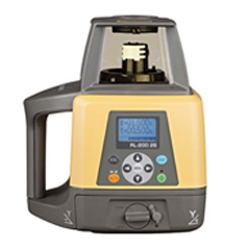 This laser level is perfect for doing exterior work, and it comes with the following accessories:
This laser level is perfect for doing exterior work, and it comes with the following accessories:
- Rechargeable battery kit.
- LS-100D laser detector with the Holder 6 rod clamp.
- RC-400 remote control.
- Hard carrying case.
The unit itself has the following specifications:
- Red laser beam.
- 2 AA batteries as a power supply.
- Low battery indicator.
- IP66 Rating.
If you’re looking for the best
laser level for your specific needs, be sure to pick yours up at Engineer Supply today!
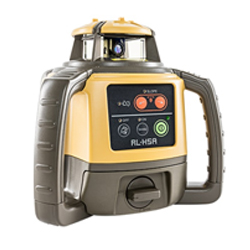 This laser level and receiver has the following features:
This laser level and receiver has the following features:
- Operating range of up 800 meters.
- Smart long-range receiver.
- Rotation speed of 600 RPM.
- Simple and intuitive manual slope capability.
- Horizontal accuracy of up to 10 arc seconds.
- Self-leveling range of up to 5 degrees.
- Up to 100 hours of battery life.
- IP66 Rating for protection against dust, sudden showers, and torrential rainfall.
If you’re looking for the best
laser level for establishing a horizontal line reference with an incredible degree of accuracy, be sure to pick yours up at Engineer Supply today!
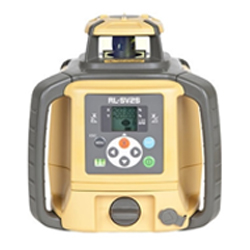 This Topcon laser level package is great for horizontal, multi-slope, and vertical applications. It also includes the following accessories:
This Topcon laser level package is great for horizontal, multi-slope, and vertical applications. It also includes the following accessories:
- Rechargeable battery kit.
- LS-100D laser detector with the Holder 6 rod clamp.
- RC-60 remote control.
- Hard carrying case.
The tool itself has the following specifications:
- Red laser beam.
- Operating range of 800 meters in diameter with a laser detector.
- Accuracy of 1/16 of an inch for every 100 feet.
- 300/600 RPM rotation speed.
- IP66 Rating for protection against dust and heavy jet spray.
If you’re looking for one of the best laser levels for a number of construction applications, be sure pick yours up at Engineer Supply today!
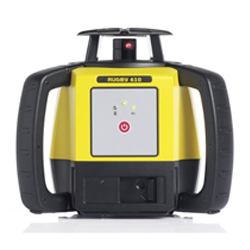 Like many other laser levels in this series, this tool is a professional solution with an excellent balance of quality and price. It will allow you to perform quick leveling and alignments for general construction and interior applications. Its housing is extremely durable, so it can perform according to the highest standard in even the harshest of job conditions. It will also work with all Leica Rod Eye Receivers, which will extend its working range up to 2,000 feet (600 meters).
Like many other laser levels in this series, this tool is a professional solution with an excellent balance of quality and price. It will allow you to perform quick leveling and alignments for general construction and interior applications. Its housing is extremely durable, so it can perform according to the highest standard in even the harshest of job conditions. It will also work with all Leica Rod Eye Receivers, which will extend its working range up to 2,000 feet (600 meters).
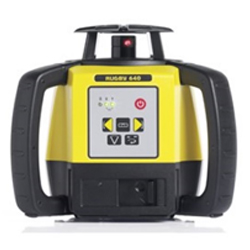 Like many other models within this series, this is the best laser level for someone who needs a professional solution with an excellent price-to-quality ratio. With this tool, you’ll be able to do any kind of construction job that requires quick leveling and aligning while eliminating costly errors, rework, and downtime. Because of its rugged housing that’s both dust and water proof, this laser level is built for the construction site. It will perform according to the highest standards in all kinds of job conditions, which is why this series of laser levels is perfect for any construction professional.
Like many other models within this series, this is the best laser level for someone who needs a professional solution with an excellent price-to-quality ratio. With this tool, you’ll be able to do any kind of construction job that requires quick leveling and aligning while eliminating costly errors, rework, and downtime. Because of its rugged housing that’s both dust and water proof, this laser level is built for the construction site. It will perform according to the highest standards in all kinds of job conditions, which is why this series of laser levels is perfect for any construction professional.
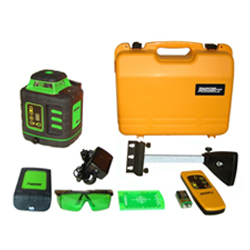 This dual-slope rotary laser level with Greenbrite Technology is the perfect tool for indoor construction projects. It’s a great tool for contractors, finish carpenters, and builders because of the visibility and accuracy it provides. The electronic self-leveling will work on both the horizontal and vertical planes. And because of its green laser beam, it will be 400% more visible than a red-beam laser level (which will make leveling tasks faster and more accurate).
This dual-slope rotary laser level with Greenbrite Technology is the perfect tool for indoor construction projects. It’s a great tool for contractors, finish carpenters, and builders because of the visibility and accuracy it provides. The electronic self-leveling will work on both the horizontal and vertical planes. And because of its green laser beam, it will be 400% more visible than a red-beam laser level (which will make leveling tasks faster and more accurate).
It’s the best laser level for a number of indoor applications, which can include but may not be limited to:
- The layout of interior walls.
- Checking door and window height.
- Installing acoustical and drop ceilings.
- Developing a layout for warehouse racking.
- Room additions.
- Drywall installations.
Be sure to pick yours up at Engineer Supply today!
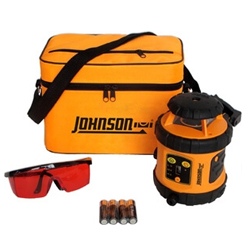 This self-leveling rotary laser level has a locking mechanism that protects the inner pendulum while it’s being transported from one place to another. It also has visual and audible alarms when it goes beyond its leveling range. The unit is powered by four AA batteries, and it comes with tinted glasses as well as a soft-sided carrying case. The laser level also has the following specifications:
This self-leveling rotary laser level has a locking mechanism that protects the inner pendulum while it’s being transported from one place to another. It also has visual and audible alarms when it goes beyond its leveling range. The unit is powered by four AA batteries, and it comes with tinted glasses as well as a soft-sided carrying case. The laser level also has the following specifications:
- Pendulum self-leveling method.
- Red Class IIIa laser beam.
- Accuracy of 1/8 of an inch for every 50 feet.
- Interior range of up to 200 feet in diameter (depending on lighting conditions).
- Exterior range of up to 800 feet in diameter with a detector.
- Self-leveling range of up to 3 degrees.
- Approximately 20 hours of battery life with a rechargeable battery pack.
- Approximately 24 hours of battery life with alkaline batteries.
If you’re looking for one of the best laser levels on the market, be sure to pick yours up at Engineer Supply.
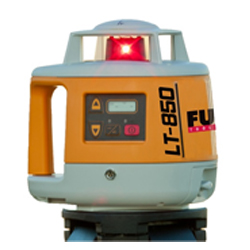 This self-leveling single-slope laser is as rugged, reliable, and accurate as it is affordable. And it’s the best laser level for any kind of level or sloped applications. This tool comes with a number of features, which include:
This self-leveling single-slope laser is as rugged, reliable, and accurate as it is affordable. And it’s the best laser level for any kind of level or sloped applications. This tool comes with a number of features, which include:
- Fully automatic self-leveling.
- Height of Instrument (HI) alert.
- Operating radius of 2,000 feet.
- Machine Control Compatible.
- Accuracy of 10 arc seconds.
It also comes with a standard CR3 Laser Detector, so be sure to pick yours up at Engineer Supply.
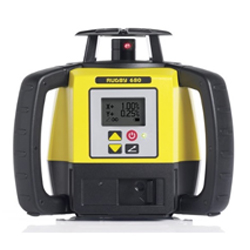 Like all other laser levels in the Rugby Series, this tool is the perfect professional solution for someone who is looking for a good balance of quality and price. Not only will it allow you to perform quick level operations in general construction and interior applications, but it will also help you to eliminate costly errors. Because of its rugged housing, this tool is built for the construction site. It can perform at the highest level in even the worst job conditions. So if you’re looking for the best laser level for your next construction project, be sure to pick yours up at Engineer Supply.
Like all other laser levels in the Rugby Series, this tool is the perfect professional solution for someone who is looking for a good balance of quality and price. Not only will it allow you to perform quick level operations in general construction and interior applications, but it will also help you to eliminate costly errors. Because of its rugged housing, this tool is built for the construction site. It can perform at the highest level in even the worst job conditions. So if you’re looking for the best laser level for your next construction project, be sure to pick yours up at Engineer Supply.
 This laser level has a vertical mount and is great for both indoor and outdoor construction applications. Carpenters, plumbers, and electricians will love using this tool, because it’s as versatile as it is accurate. The self-leveling mechanism will work on both the horizontal and vertical planes. It can also be useful in the following applications:
This laser level has a vertical mount and is great for both indoor and outdoor construction applications. Carpenters, plumbers, and electricians will love using this tool, because it’s as versatile as it is accurate. The self-leveling mechanism will work on both the horizontal and vertical planes. It can also be useful in the following applications:
- Leveling.
- Checking cut and fill.
- Setting foundations and footings.
- Septic tank and basement excavations.
- Acoustical ceiling and drywall installations.
- Aligning and plumbing walls.
- Contour framing.
If you’re looking for the best
laser level for your specific needs, be sure to pick yours up at Engineer Supply.
Please Wait...
